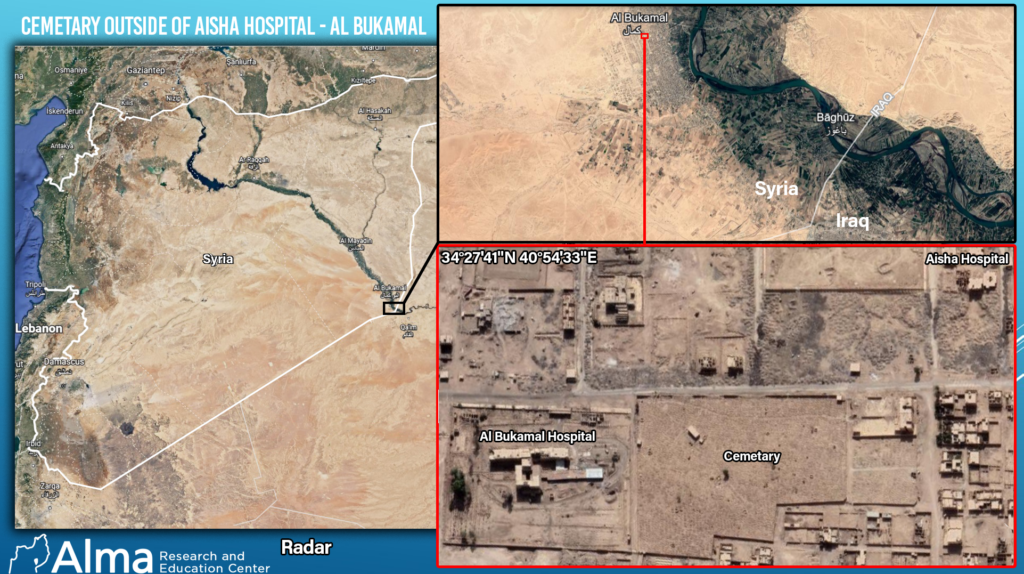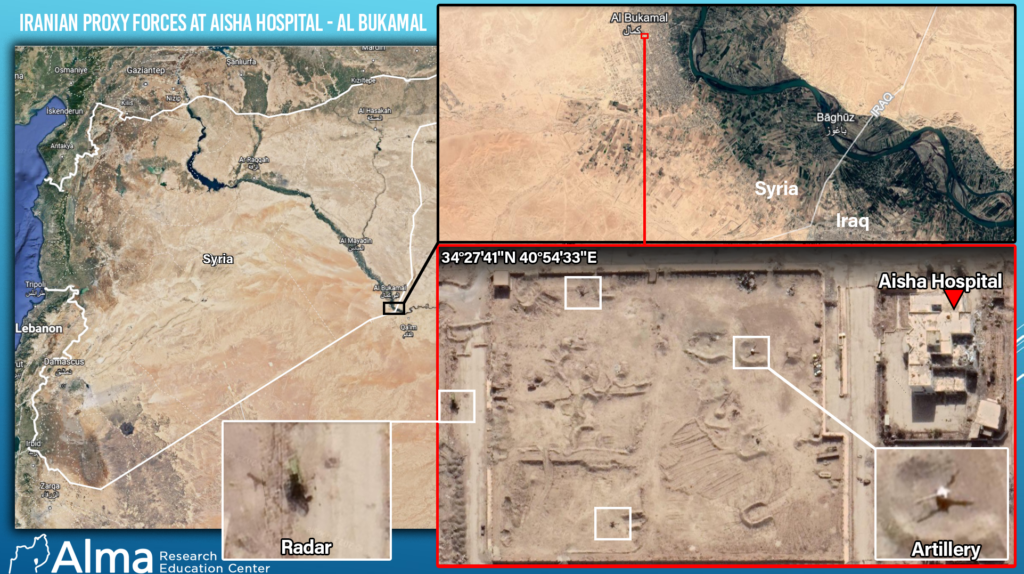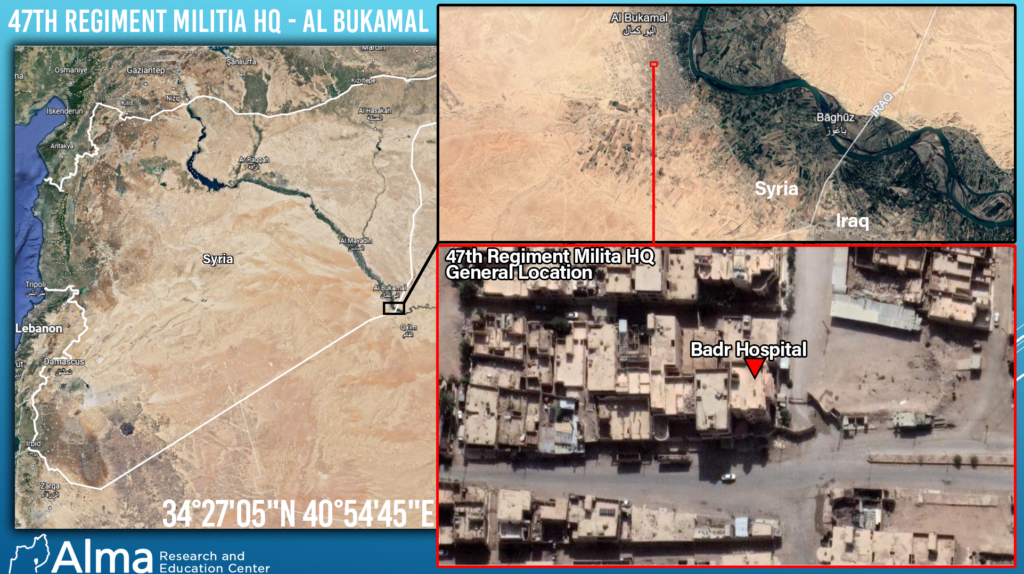Photo: Three different kinds of fast attack vessels in Houthi possession, as displayed in their military parade in Saana, Yemen – September 21st, 2023. In the early morning hours of December 31st, 2023, four Houthi vessels attacked US forces at sea as they were responding to a commercial vessel under attack by Houthi projectiles.
In the Gaza Strip, IDF troops destroyed strategic underground terrorist infrastructure, eliminated terrorists, and dismantled weapons compounds, including ones disguised within civilian structures like schools, kindergartens, and mosques. Significant engagements included the activation of UAV and fighter jet strikes, sniper fire, tank fire, artillery, and close-quarters combat, resulting in the destruction of terrorist cells, weapon caches, and tunnel networks. The IDF dismantled large Hamas brigade and battalion structures in northern Gaza, as it continues to intensify operations in southern Gaza, particularly Khan Yunis. Intelligence recoveries, like Hamas computer drives and tunnel camera footage, and plans against IDF forces, were made by the IDF. In the North, the IDF struck extensively in southern Lebanon in response to Hezbollah attacks, using artillery and airstrikes targeting Hezbollah military sites, and anti-tank missile firing squads in vehicles. A key IRGC officer was eliminated in Damascus.
Defense Minister Gallant said this past week:
“We are in a multi-front war, we are being attacked from seven different sectors – Gaza, Lebanon, Syria, Judea and Samaria, Iraq, Yemen, and Iran. We have responded and acted already in six of these sectors, and I say here in the most explicit way – anyone who acts against us is a potential target, no one is immune.”
Number of Israeli civilian casualties: Over 800
Number of IDF casualties: 504
Number of IDF casualties since the ground offensive on October 28: 170
Number of Israeli police casualties: 58
Number of ISA casualties: 10
Total Israeli casualties since Oct. 7: Over 1300
Israeli Hostages in Gaza: 129
Number of Israeli evacuees in the north: 80,000
Number of Israeli internally displaced people in total: 218,000
Number of rockets launched by Hamas: Over 11,000
Number of terror targets struck in Gaza by IDF: As of October 10, over 22,000 targets
This week’s northern events:
IAF fighter jets targeted Hezbollah terror infrastructure in the area of Kfarkela in southern Lebanon, in an operation that included two extensive series of strikes on numerous enemy targets.
Kfarkela is a Hezbollah stronghold, according to the IDF, where Hezbollah has built extensive infrastructure and exploits civilians as human shields for its activities. Since the beginning of the war, Hezbollah has carried out a large number of launches from Kfarkela toward Israeli territory.
מוקדם יותר היום, מטוסי קרב של חיל האוויר תקפו תשתיות טרור של ארגון הטרור חיזבאללה במרחב כפר כילא שבדרום לבנון, במבצע שכלל שני גלי תקיפה ממוקדים על שורת מטרות בשעות הבוקר והצהריים.
— צבא ההגנה לישראל (@idfonline) December 30, 2023
כפר כילא מהווה מעוז של ארגון הטרור חיזבאללה, כאשר הארגון עושה שימוש בתשתיות במרחב לצרכי טרור >> pic.twitter.com/Vre9SO8Onk
Hezbollah fired an anti-tank missile from Lebanon at the Greek Orthodox Church of Iqrit in northern Israel, injuring a civilian. IDF and Magen David Adom personnel were dispatched to the scene to provide
medical assistance, and were targeted by a second anti-tank missile attack, which injured 9 IDF personnel.
Dec 27 – Hezbollah released footage of their strike on the Iqrit Church. Hezbollah also fired 18 rockets at Rosh HaNikra, 12 at Shebaa farms, and 11 at Kiryat Shmona, of which at least 4 exploded inside the city and 3 were intercepted by the Iron Dome. https://t.co/UgAhlIUcFh
— Israel-Alma (@Israel_Alma_org) December 27, 2023
Hezbollah continued to target northern Israel with anti-tank missiles, rockets, and suicide drones, sending one drone into the area of Krayot, just north of Haifa. Israeli air defenses neutralized many of the threats.
IDF’s responsive actions included precision airstrikes on Hezbollah military targets and terrorist infrastructure in Lebanon.
The IDF struck a Hezbollah terrorist cell responsible for launching anti-tank missiles in the area of Aitaroun in southern Lebanon, and a missile launcher used to launch toward the area of Bar’am in northern Israel earlier today. Lebanese media reports said a UAV struck the vehicle in Aitaroun.
IDF Spokesman Rear Adm. Daniel Hagari stated, “Hezbollah is trying to drag the country of Lebanon and the region into this war that Hamas started. If Hezbollah continues, they will bear the consequences and the responsibility for the outcome: an unnecessary war aimed at fulfilling an ISIS ideology, that could bring unwanted destruction to the people of Lebanon in this war they don’t deserve. A war that the entire region doesn’t deserve.”
Hagari also stated this past week that “the southern region of Lebanon will not return to what it used to be.”
The IAF targeted terrorist squads in Lebanon throughout the past week, and the IDF also struck Hezbollah’s operational infrastructure. IDF artillery struck in additional locations in Lebanon.
IDF Chief of Staff Lt. Gen. Herzi Halevi approved operational plans at the military’s Northern Command, and discussed the need to “be ready to attack if required.”
In Syria, international media reports said senior IRGC commander Brig. Gen. Razi Mousavi was killed in a missile strike in the Damascus area. Iran blamed the strike on Israel and threatened revenge. Mousavi was believed to have been responsible for smuggling Iranian arms to Syria and Lebanon.
In this duplex complex resided the now-eliminated (Dec 25) Reza Mousavi. The duplex is in the Aqraba neighborhood in southern Damascus, east of Sayyda Zainab. It includes two villas with two adjacent pools in a rural area that is considered relatively isolated and where there are… pic.twitter.com/nhmb2g4eTK
— Israel-Alma (@Israel_Alma_org) December 30, 2023
A series of unusual attacks were reported in Syria, at Al-Bukamal near the Iraqi border. Several reports assessed that Israel was behind the bombings. The strikes were aimed against an arms smuggling route managed by the late Reza Musavvi.



The Syrian Observatory for Human Rights, an opposition organization to Assad’s regime based in London, reported that the attacks killed nine pro-Iranian militia members, including three Syrians and six non-Syrians. AP reported that four of the deceased were Hezbollah members, while two others were Syrians.
This week’s Southern events:
The IDF conducted extensive operations in northern, central, and southern Gaza, focusing on dismantling Hamas’ infrastructure and eliminating terrorist threats.
Focal points include Darj Tufah, Hamas’s last significant stronghold in the northern Gaza Strip, central Gazan camps, and in southern Gaza, the area of Khirbet Khuza’a, from where terrorists who conducted the massacre in Nir Oz emerged, as well as in Khan Yunis.
During the ground operation in Khan Yunis, IDF forces raided the Hamas headquarters in the heart of the city, including the organization’s intelligence command center.
Key actions included airstrikes and ground operations targeting tunnel networks, weapon compounds, and terrorists in civilian areas, destroying Hamas observation assets, and uncovering a significant underground headquarters. Additionally, IDF forces recovered hostages and located numerous weapons, explosives, and intelligence documents in various raids.
The 14th Reserve Brigade Combat Team, under the command of the 162nd Division, located and destroyed one of the hideout apartments of the Leader of the Hamas terrorist organization in the Gaza Strip, Yahya Sinwar. The apartment was located near Gaza City in the northern Gaza Strip, with many findings inside.
IDF Spokesman Rear Adm. Daniel Hagari stated that in northern Gaza tunnels, “We found lots of intelligence, there are rooms with security cameras and drives in northern Gaza. We took them apart with the Shin Bet and Military Intelligence. We are producing all sorts of intelligent
products from these, with these we hope to reach higher achievements against Hamas.”
Soldiers of the Yahalom Unit examined the apartment using additional technological means and discovered that a strategic tunnel shaft was located on the basement floor. The soldiers inspected the tunnel shaft and reached a significant tunnel that is apparently used by the senior officials of Hamas’ Military and Political Wing.
IDF troops targeted terrorist infrastructure in Khan Yunis, in southern Gaza.
The Kfir infantry brigade has since last week been assisting operations in the Khan Yunis area, a Hamas stronghold, joining the 98th Division that is already active there. The combined forces led to the elimination of numerous terrorist cells and the discovery of extensive weaponry and tunnels, with ground units receiving artillery, air, and armored fire support and battlefield assistance.
The Intelligence and Technical Haul collection unit in IDF Military Intelligence reported processing over 65 million files, and another half a million documents, operational plans, and combat doctrine of the Hamas terror organization.
The IDF’s 188th Brigade has been operating since the beginning of the week in the Al Bureij Camp in the central Gaza Strip. During their activity in the area, the troops encountered many terrorists who attacked the forces from positions within civilian buildings and populations.
“Hamas and its leaders think in terms of ‘Tsumud,’ which in Arabic means to hold firm, in other words, they believe that IDF forces will soon leave the Gaza Strip. We are determined and intend to continue to apply military pressure and dismantle Hamas. The test will be in actions, not words,” said IDF Spokesman Rear Adm. Daniel Hagari.
This Week’s humanitarian efforts:
More than 5,500 trucks containing over 100,000 tons of aid, as well as fuel and gas tankers have entered the Gaza Strip since the beginning of the war.
More than 5,953 tons of food have entered the Gaza Strip.
Over 15,940 tons of water have entered the Gaza Strip, as well as over 9,910 tons of medical supplies. Over 12,000 tons of temporary shelter supplies have entered the Gaza Strip, as well as over 8,960 tons of mixed aid have entered the Gaza Strip.
49 thousand doses of vaccine against illnesses including polio, tuberculosis, hepatitis, diphtheria, tetanus, whooping cough, meningitis, and others were brought into the Gaza Strip in coordination with Israel. UNICEF (the United Nations Children’s Fund) worked with the Israeli Defense Ministry’s Unit for the Coordination of Government Activities in the Territories (COGAT) to facilitate the entry of donated vaccines into the Gaza Strip in order to prevent epidemics of contagious disease there.
This week’s West Bank events:
The IDF continued to conduct a series of counter-terrorism raids to thwart attacks. The military detained dozens of security suspects, including Hamas operatives across raids in Hebron, Jenin, and other areas.
In Qalqilya, the Gideonim Unit eliminated two terrorists. Operations in the Jenin Camp resulted in the confiscation of weapons and explosives. Explosives were found in Nor A Shams Camp in Tul Karm. A terrorist who fired at IDF troops was eliminated.
Weapons caches were seized in multiple locations, including houses of charity associated with Hamas.
An attempted stabbing was foiled near Nablus. Airstrikes targeted terrorists in the Nor A Shams Camp, killing four. A pursuit was launched of terrorists who shot and wounded an Israeli citizen near Rawabi.
The home of a terrorist responsible for a deadly attack in Hawara was demolished. IDF operations targeted Hamas funding and weaponry across the territories.
Red Sea Arena and other arena events this week:
The container ship MAERSK HANGZHOU reported being struck by a missile while transiting the Southern Red Sea, according to US CENTCOM. The Singapore-flagged, Denmark-owned/operated container
ship requested assistance, and the USS Gravely and USS Laboon responded to the ship.
While responding, the USS Gravely shot down two anti-ship ballistic missiles fired from Houthi-controlled areas in Yemen toward the ships.
“This is the 23rd illegal attack by the Houthis on international shipping since Nov. 19,” said CENTCOM.
Then, on December 31st, 2023, Houthi fighters and US military personnel engaged each other for the first time in history. The encounter is detailed by CENTCOM’s official X account below:
Iranian-backed Houthi small boats attack merchant vessel and U.S. Navy helicopters in Southern Red Sea
— U.S. Central Command (@CENTCOM) December 31, 2023
On Dec. 31 at 6:30am (Sanaa time) the container ship MAERSK HANGZHOU issued a second distress call in less than 24 hours reporting being under attack by four Iranian-backed… pic.twitter.com/pj8NAzjbVF
Before that event, in the past week, the United States announced its successful interception of 12 drones and five missiles launched by Iran-aligned Houthis. The USS Laboon and F-18 jets from the Eisenhower carrier group engaged 12 one-way attack drones, three anti-ship ballistic missiles, and two land attack cruise missiles over a 10-hour span in the southern Red Sea, as per US CENTCOM. Simultaneously, Israel’s military reported downing a drone, likely from Yemen, over the Red Sea.
Announced by @CENTCOM: “U.S. assets, to include the USS LABOON (DDG 58) and F/A-18 Super Hornets from the Eisenhower Carrier Strike Group, shot down 12 one-way attack drones, 3 anti-ship ballistic missiles, and 2 land attack cruise missiles in the Southern Red Sea that were fired… pic.twitter.com/TbHMcc8cUS
— Israel-Alma (@Israel_Alma_org) December 26, 2023






